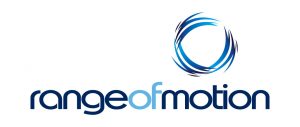
SESSION NOTES: Olympic Lifting (159, 164, 168, 172)
A) ROM Olympic Lifting warm-up for snatch, clean, jerk.
B) 10 mins to find a max for each of the three lifts.
Programming Science:
Part A addresses the most common faults in Olympic Weightlifting and allows you to practice them without intensity. Part A is the most powerful thing you can do to improve your overall technique.
In part B, with one of the movements being ‘squat’ and one being ‘power’, we’re minimising the interference between the two to maximise the benefit of each.
This session is more about ‘testing’ than ‘training’. Although the majority of your exercise program should be about ‘training’ and ‘practice’ (both of which increase your health, fitness and performance), it is also important to be able to track your progress to gauge the success of the program.
That being said, there is a definite (though not prioritised) training benefit of this session too, with benefits for strength, power and speed development.
Health and Body Composition Benefits:
Resistance training (using your muscles to lift heavy weights, either external weights or yourself) makes you stronger. Strength is one of the greatest predictors of both your lifespan (how long you live) and your healthspan (how long you live in a healthy state).
Resistance training like this will also improve your flexibility (by going through a full range of motion), posture and coordination. It will also build stability around your joints and spine to give you a healthy musculo-skeletal system and reduce joint and back pain.
Functionally, Olympic lifting will teach you the safest and most efficient ways to move objects in your everyday life.
The session will minimise losses in bone mineral density and will improve your balance. The dynamic positions you encounter in Olympic lifting will improve your agility.
Strength and balance are the two strongest predictors of falls later in life. Add agility to the mix, and Olympic Lifting becomes an effective way to train fall prevention, and insure your independence into old age.
The complex nature of these movements, and the need for high levels of learning, will improve and preserve your cognitive function with age, and encourage neuroplasticity.
As a result of this style of session, you will experience changes in blood chemistry, including favourable effects on cholesterol, blood glucose, triglyceride and lipid levels.
Some of the more advanced positions (and extremes of joint positions) in the Olympic lifts can be excellent diagnostic tools to identify areas of the musculo-skeletal system that need addressing.
This session increases your lean muscle mass and muscle fibre size. Muscle is a metabolically active tissue, so increasing it will maximise how much energy your body burns at rest. This makes it an effective session to reach healthy levels of body fat, both visceral fat (around the organs) and subcutaneous fat (under your skin). After this session, your body will go through a prolonged state of ‘EPOC’ (excess post- exercise oxygen consumption), meaning you’ll continue burning energy long after you finish training – further aiding healthy body composition.
Performance Benefits:
This session is more about ‘testing’ than ‘training’. Although the majority of your exercise program should be about ‘training’ and ‘practice’ (both of which increase your health, fitness and performance), it is also important to be able to track your progress to gauge the success of the program.
One benefit of maximal lifting is the need for a very high level of muscle recruitment to achieve a successful, heavy lift. This can increase lifting efficiency by teaching the individual how to achieve this very high percentage of muscle recruitment.
Although testing is the primary purpose of this session, the heavy levels of resistance are also designed to increase your strength – increasing both your one rep max, and your ability to lift submaximal weights. By being stronger, you can lift more weight, and you will be able to lift submaximal weights faster and for higher reps because they’ll be at a lower percentage of your max.
The high movement velocities in this session will train your ability to move fast, increasing speed. These speed benefits will not only improve your Olympic lifting, but will increase your explosiveness and agility in a range of explosive athletic movements, and will allow you to generate force at a higher rate in the slower power lifts (increasing your absolute strength).
This session will also improve the efficiency of your fast-twitch muscle fibres (those responsible for lifting heavy and fast), and will improve your neuromuscular efficiency (your ability to turn on a very high percentage of your muscle fibres).
Strategy:
Build to around 80% of your max before the 10 minutes starts. Then, take no more than five lifts to find a max. Note, you should build to your maximal weight with good technique. If you reach technical failure, cease lifting, and record that as your max. It’s ok to build to a weight that you fail at, but only if the failure is due to lack of strength, not technique breakdown.
How it Should Feel:
This should be a maximal effort. Although the heaviness should challenge your technique, your technique shouldn’t break down.
Scaling Guidelines:
With the snatch and clean, begin the movement from the lowest position possible without technique being jeopardised. If you cannot lift with good technique from the ground, start the lift from the knee. If you cannot lift with good technique from the knee, start from power position.
Common Mistakes:
Aside from standard technique faults, the most common mistake with this session is not giving part A the time it deserves. In part B, some people will go too light, and not get the benefit, and some will go too heavy, to the point where technique breaks down. Go as heavy as possible with good technique.




